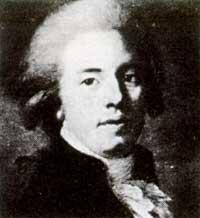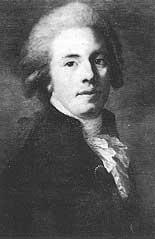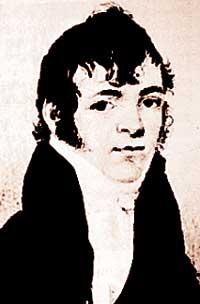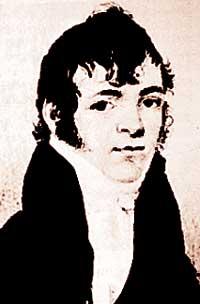Elhuyar, Fausto Fermin
1995/08/02 Azkune Mendia, Iñaki - Elhuyar Fundazioa | Kaltzada, Pili - Elhuyar Zientziaren Komunikazioa
(1755-1833)
Fausto Fermin Elhuyar Zubize was born in Logroño on October 11, 1755. His father Jean Elhuyar was a renowned surgeon, born in Hazparn and expert in the operation of the eye falls. People came to be cured from many places. He died as his little mother Ursula of San Juan de Luz and his older brother Juan José and his younger sister María Lorentza married again.

1772am, my father sent to Paris with his brother Faust to study. Like his brothers, he worked mainly in chemistry and mineralogy. In 1778, a year after his brother John Joseph, he began to work in the laboratory of the Royal Seminary of Bergara, but soon two brothers returned to Europe (Paris, Strasburg, Mannheim, Freiburg, Leipzig, etc.) to learn the latest metallurgical techniques.
After touring Austria and Hungary in 1781, in October he returned to Bergara, while his brother Juan José left for Sweden. In Bergara Fausto applied a third of his endowment to a mineral from Saxony, from the tin mines of Zinnwald, on the border of Bohemia and Saxonia. From 1782 he rehearsed with his brother Juan José.
Decomposition of the mineral and extraction of iron and manganese. When treating the resulting residue with nitric acid, white precipitation is obtained. Subsequently, in combination with hydrochloric acid, yellow precipitation (Wolfram oxide VI) was obtained. To reduce it, they crushed it and mixed it with coal powder in an hour and a half over a strong fire. It came out like a grey button. On the fingers they were returned dust, being the largest the size of the needle head. Wolframio is a chemical element isolated for the first time in the world in Bergara.
For the first time at the General Board of Vitoria-Gasteiz of the Real Sociedad de Amigos del Pueblo, founded by Xabier María Munibe and the Caballeritos de Azkoitia, this main discovery was announced. The following year and probably in writing by Fausto, the Academy of Sciences of Tolosa Française published the report of the discovery process. It was published in 1785 in England, in 1786 in Germany and later in Sweden.
Fausto Elhuyar, with his brother Joan José, tried to obtain tungsten alloys mixed with gold, platinum, silver, copper, cast iron, etc.
Fausto travelled from Bergara to Germany and Hungary to learn the techniques devised by Baron de Born to treat silver minerals with mercury. He also worked to bring technicians to America. In Vienna on October 16, 1787, he married Joana Raabe and then wrote in French Dissertations métalurgiques, but unfortunately he has not reached us.
Back in Spain, until 1788 he was dedicated to training engineers and mining technicians, many Germans. He took them to Mexico to improve and restore their farms.
In 1792 he founded in Mexico the "Real Seminario de Minas", the first school of engineers of the country. When in 1821 Agustín Iturbide, emperor of Mexico, arrived in America, Fausto resigned from his post and returned to Spain. He organized the Directorate General of Mining of Spain and began the elaboration of the geological map of Spain. He also studied Asturian mines.
Director General of Minas and Director of the Mining School, he died in Madrid on January 6, 1833, his only daughter Luisa in Havana.

Gai honi buruzko eduki gehiago
Elhuyarrek garatutako teknologia





